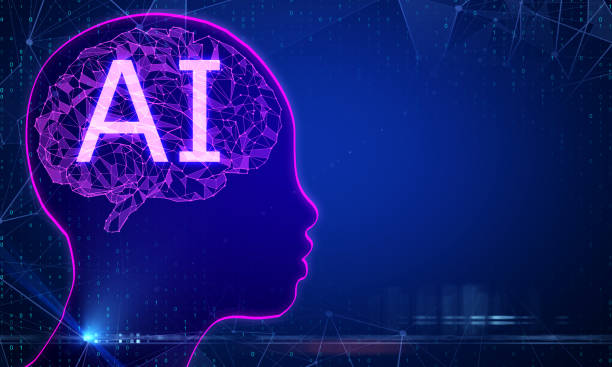What is On-Page SEO and Why is it Important?
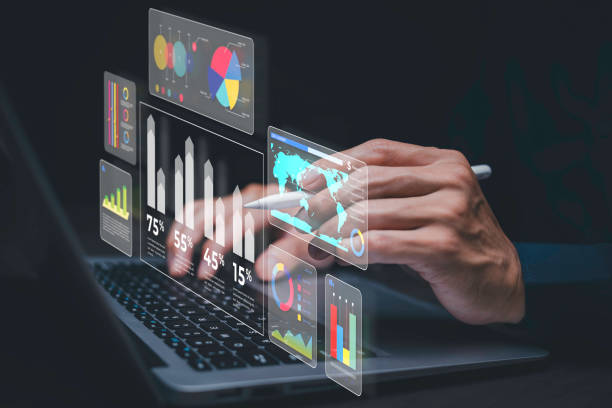
On-Page SEO, or #On-Page SEO, refers to the set of actions you take within your website to improve its ranking in search engines like Google.
These actions include content optimization, HTML tags, site structure, and more.
The importance of On-Page SEO lies in helping search engines better understand your site’s content, consequently showing your site to more relevant users.
By properly implementing On-Page SEO, you can attract more organic traffic and, as a result, boost your business.
On-Page SEO helps you have more control over your site’s ranking.
Compared to Off-Page SEO, which relies on factors outside your site (like backlinks), On-Page SEO allows you to directly influence your ranking by improving your content quality and site structure.
By optimizing your titles, meta descriptions, and page content, you can show search engines that your site is relevant and valuable.
In summary, On-Page SEO is a fundamental component of an SEO strategy that helps you optimize your site for search engines and attract more traffic.
Ignoring On-Page SEO can lead to missing valuable opportunities to attract customers and increase revenue.
Does your current e-commerce website design not generate the sales you expect?
Rasaweb is an expert in professional e-commerce website design!
✅ An attractive and user-friendly website aimed at increasing sales
✅ High speed and security for an ideal shopping experience⚡ Get a free consultation for online store design with Rasaweb!
Keyword Research: Finding the Best Opportunities
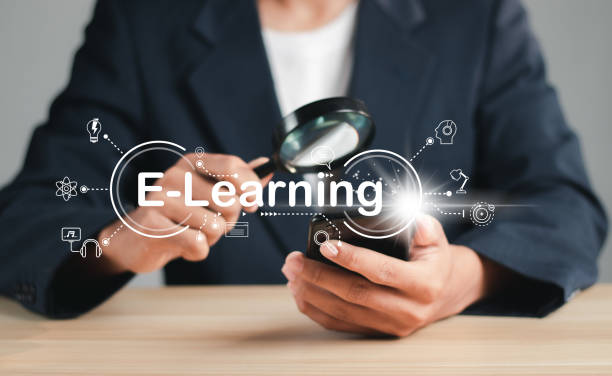
Keyword research is one of the most important steps in On-Page SEO.
The goal is to find the words users employ to search for your products or services.
By understanding these words, you can optimize your site’s content around them and increase your chances of being seen in search results.
Various tools are available for keyword research, including Google Keyword Planner, Ahrefs, and SEMrush.
These tools provide you with information such as search volume, competition level, and related keywords.
When selecting keywords, look for those that have a good search volume but not excessively high competition.
Long-Tail Keywords typically have less competition and can attract more targeted traffic to your site.
For example, instead of the keyword “shoes,” use the phrase “buy cheap men’s athletic shoes.”
After finding suitable keywords, you need to incorporate them into your site’s content.
However, overusing keywords can have the opposite effect and cause your site to be penalized by search engines.
Try to use keywords naturally and in relevant texts.
Using keywords in titles, meta descriptions, and the main text of your pages is very important.
Content Optimization: Producing Valuable and Engaging Content
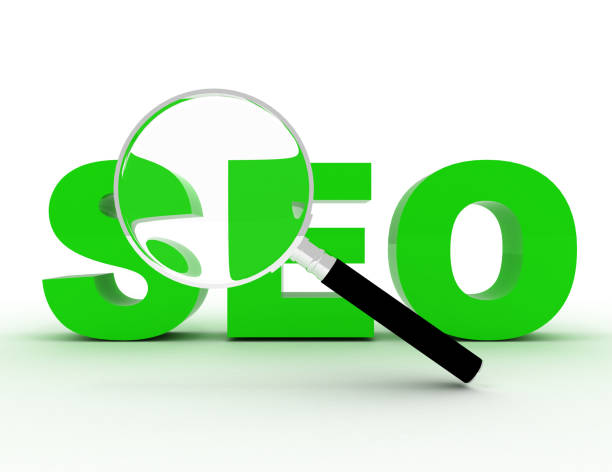
Content is King! This phrase is very famous in the SEO world and signifies the high importance of content in website rankings.
Valuable and engaging content not only keeps users on your site but also encourages them to return and recommend it to others.
To produce high-quality content, you must pay attention to your audience’s needs and interests and provide content that answers their questions.
When producing content, pay attention to a few important points:
- Quality: Your content must be accurate, complete, and up-to-date.
- Relevance: Your content must be relevant to your target keywords.
- Engagement: Your content must be engaging and readable.
Use images, videos, and infographics to make your content more appealing. - Structure: Your content must have an appropriate structure.
Use headings, subheadings, and short paragraphs to organize your content.
Content optimization for On-Page SEO means using relevant keywords in titles, subheadings, main text, images, and links.
Also, try to update your content regularly.
Old and outdated content can negatively affect your site’s ranking.
Search engines give higher scores to sites that continuously produce new and relevant content.
By producing high-quality and up-to-date content, you can attract more organic traffic and improve your site’s ranking in search results.
On-Page SEO literally means this!
Here is a table to show the best blog content length based on purpose:
| Purpose | Suggested Content Length |
|---|---|
| Improve Google Ranking | 2000+ words |
| Explain a Topic | 1500-2500 words |
| Attract More Audience | 1000-2000 words |
| Teach a Skill | 500-1500 words |
| Announce News | Less than 500 words |
Optimizing HTML Tags: The Impact of Titles and Descriptions

HTML tags play an important role in On-Page SEO.
These tags help search engines better understand the structure and content of your site’s pages.
The most important HTML tags that should be optimized include: Title Tag, Meta Description, Heading Tags, and Image Alt Text.
Optimizing these tags can significantly impact your site’s ranking.
The Title Tag is one of the most important ranking factors in search engines.
Each page’s title must be unique and relevant to its content.
Also, the title should include your target keywords.
Try to write an appealing and compelling title to encourage users to click on your link in search results.
The title length should be between 50 and 60 characters to be fully displayed in search results.
The Meta Description is a summary of your page’s content displayed below the title in search results.
Meta descriptions play a crucial role in attracting users.
Try to write your meta description attractively and relevantly to the page’s content.
Also, the meta description should include your target keywords.
The meta description length should be between 150 and 160 characters.
Optimizing Heading Tags (like H1, H2, and H3) is also very important.
Use these tags to organize your content and incorporate your target keywords into them.
Falling behind in competition with large online stores?
Rasaweb, with its professional e-commerce website design, brings your business online and increases your market share!
✅ Enhance brand credibility and customer trust
✅ Easy shopping experience leading to more sales
⚡ Act now to get a free website design consultation!
Improving Site Structure: Creating an Excellent User Experience

Site structure plays a significant role in On-Page SEO and user experience.
A good site structure should be simple, logical, and easy to navigate.
Users should be able to easily find the pages they are looking for, and search engines should be able to easily index your site’s pages.
To improve your site’s structure, you can use the following methods:
- Create a Sitemap: A sitemap is an XML file that contains a list of all your site’s pages.
By providing a sitemap to search engines, you help them index your site better and faster. - Use Clean and Descriptive URLs: Your site’s page URLs should be short, descriptive, and include relevant keywords.
Avoid using long and complex URLs. - Create Internal Links: Internal links are links that connect different pages of your site to each other.
Internal links help search engines better understand your site’s structure and help users easily find relevant pages.
An excellent User Experience (UX) also plays an important role in On-Page SEO.
If users are satisfied with your site, they will spend more time on it, and their likelihood of returning increases.
These factors can positively impact your site’s ranking.
To improve your site’s user experience, you can use the following methods:
- Improve Site Loading Speed: Site loading speed is one of the most important user experience factors.
If your site is slow, users will quickly leave it.
To improve your site’s loading speed, you can use various tools such as Google PageSpeed Insights. - Optimize Site Design for Mobile: Nowadays, most users access the internet via mobile devices.
Therefore, it is important that your site is optimized for display on mobile devices. - Create Engaging and Relevant Content: Your content should be engaging, relevant, and answer users’ needs.
On-Page SEO is ultimately about optimizing the site for users.
Image Optimization: Boosting Site Speed and Ranking
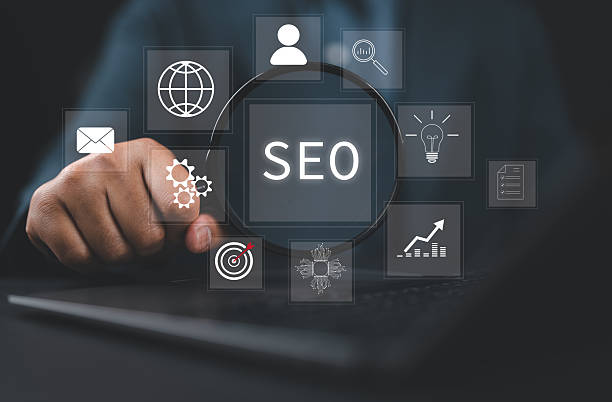
Images play an important role in attracting users and improving user experience.
However, large and unoptimized images can slow down your site’s loading speed and negatively affect your site’s ranking.
To optimize your images, you can use the following methods:
- Choose the Right Format: JPEG, PNG, and GIF are the most common image formats.
JPEG is suitable for images with many colors, PNG for images with many details, and GIF for animated images. - Reduce Image Size: Reduce your image sizes as much as possible.
You can use various tools such as TinyPNG and ImageOptim to reduce your image sizes. - Use Alt Tag: The Alt tag is a description for the image that is displayed if the image fails to load.
The Alt tag should be descriptive and include relevant keywords. - Use Descriptive Filenames: Your image filename should be descriptive and include relevant keywords.
Instead of using generic names like image1.jpg, use descriptive names like red-shoes-for-men.jpg.
Image optimization is an important aspect of On-Page SEO that is often overlooked.
By optimizing your images, you can improve your site’s loading speed and provide a better user experience for your users.
Also, image optimization can help search engines better understand your site’s content and improve your site’s ranking in search results.
On-Page SEO means paying attention to all the details!
Internal Linking: Connecting Pages

Internal linking is one of the most important factors in On-Page SEO that helps search engines better understand your site’s structure and helps users easily find relevant pages.
Internal links are links that connect different pages of your site to each other.
By creating internal links, you can transfer authority and value (Link Juice) between different pages of your site and improve the ranking of your important pages in search results.
When creating internal links, pay attention to a few important points:
- Relevance: Links should be relevant to the content of the source and destination pages.
- Anchor Text: The anchor text should be descriptive and include relevant keywords.
- Number of Links: The number of internal links on each page should be reasonable.
Avoid creating too many links on one page. - Link Placement: Links should be placed in appropriate locations on the page.
Try to place links in the main text and near relevant keywords.
Internal linking is one of the best ways to improve your site’s On-Page SEO.
By creating internal links, you can improve your site’s structure, transfer authority and value between different pages of your site, and provide a better user experience for your users.
By doing this, you optimize the site’s On-Page SEO.
| Link Type | Purpose | Example |
|---|---|---|
| Textual | Content correlation and keyword ranking | On-Page SEO is one of the most important factors… |
| Image | User guidance and improved user experience | |
| Footer | Directing to important pages like Contact Us | Contact Us |
Mobile Optimization: Responsive and Device-Compatible

Nowadays, most users access the internet via mobile devices.
Therefore, it is important that your site is optimized for display on mobile devices.
Mobile optimization means creating a Responsive site that automatically adapts to the screen size of different devices.
If your site is not optimized for mobile, users will have a bad user experience and will quickly leave your site.
This can negatively affect your site’s ranking.
To ensure your site is responsive, you can use Google’s Mobile-Friendly Test tool.
In addition to responsiveness, you should also pay attention to the site’s loading speed on mobile devices.
Mobile site loading speed is usually slower than desktop site loading speed.
Therefore, you should strive to improve your mobile site’s loading speed as much as possible.
To do this, you can use the following methods:
- Image Optimization: Large and unoptimized images can slow down your site’s loading speed.
- Using a CDN: A CDN (Content Delivery Network) is a network of servers that stores your site’s content in different geographical locations.
By using a CDN, users can retrieve your site’s content from the nearest server, and your site’s loading speed will increase. - Reduce Code Size: Reduce the size of your site’s HTML, CSS, and JavaScript code as much as possible.
Mobile optimization is an important aspect of On-Page SEO that should not be overlooked.
By optimizing your site for mobile, you can provide a better user experience for your users and improve your site’s ranking in search results.
Modern On-Page SEO means focusing on mobile user experience.
Did you know that 94% of users’ first impression of a business is related to its website design? With professional corporate website design by **Rasaweb**, turn this first impression into an opportunity for growth.
✅ Attract more customers and increase sales
✅ Build credibility and trust in the eyes of the audience⚡ Get a free website design consultation!
Site Speed: Improving Performance and Google Ranking

Site speed is one of the most important ranking factors in Google.
Google gives higher scores to sites that load faster.
Also, users prefer to use sites that load faster.
If your site is slow, users will quickly leave it, and your site’s bounce rate will increase.
This can negatively affect your site’s ranking.
To check your site’s speed, you can use various tools such as Google PageSpeed Insights and GTmetrix.
To improve your site’s speed, you can use the following methods:
- Image Optimization: Large and unoptimized images can slow down your site’s loading speed.
- Using a CDN: A CDN (Content Delivery Network) is a network of servers that stores your site’s content in different geographical locations.
By using a CDN, users can retrieve your site’s content from the nearest server, and your site’s loading speed will increase. - Reduce Code Size: Reduce the size of your site’s HTML, CSS, and JavaScript code as much as possible.
- Enable Caching: By enabling caching, users’ browsers can store your site’s content in their memory, and on subsequent visits, load your site faster.
Improving site speed is an important aspect of On-Page SEO that directly impacts your site’s ranking in Google.
By improving your site’s speed, you can provide a better user experience for your users and improve your site’s ranking in search results.
Efficient On-Page SEO means high speed!
Monitoring and Measuring Results: Continuous Tracking and Improvement

On-Page SEO is a continuous process that requires monitoring and measuring results.
You should regularly check your site’s performance and identify its strengths and weaknesses.
By reviewing your site’s performance, you can improve your On-Page SEO strategy and achieve better results.
To monitor and measure results, you can use various tools such as Google Analytics and Google Search Console.
Using Google Analytics, you can review information such as the number of visitors, bounce rate, time spent on the site, and most visited pages.
This information helps you understand user behavior on your site and optimize your content based on their needs.
Using Google Search Console, you can review information such as the number of clicks, impressions, average ranking, and keywords through which users reached your site.
This information helps you assess your site’s performance in search results and optimize your On-Page SEO strategy accordingly.
Monitoring and measuring results is an important step in On-Page SEO that should not be overlooked.
By monitoring and measuring results, you can continuously improve your site’s performance and increase its ranking in search results.
Always remember that On-Page SEO is a dynamic process and requires continuous improvement.
Frequently Asked Questions
| Question | Answer |
|---|---|
| What is On-Page SEO? | It refers to the set of actions performed within a website to improve its ranking in search engines. |
| Why is On-Page SEO important? | Because it helps search engines better understand your site’s content and structure, and improves user experience. |
| What are the most important elements of On-Page SEO? | Title and meta descriptions, keywords, URL structure, quality content, image optimization, internal linking, and site speed. |
| How to optimize Title Tags and Meta Descriptions? | The title should include the main keyword and be engaging, and the meta description should be a compelling summary of the content with relevant keywords. |
| What is the role of keywords in On-Page SEO? | Keywords help search engines understand what the page content is about and should be used naturally and intelligently within the text. |
| How is image optimization done for On-Page SEO? | By compressing size, using descriptive filenames, and filling the Alt tag with relevant descriptions and keywords. |
| What is Internal Linking and what is its use? | It is the connection of different pages of a site to each other. This helps distribute Page Authority and improves search engine crawling. |
| What is the importance of site loading speed in On-Page SEO? | High speed improves user experience and is an important ranking factor for search engines like Google. |
| What is the impact of Mobile-Friendliness on On-Page SEO? | Given the increase in mobile users, responsiveness is essential for providing a suitable user experience on all devices and for Google’s mobile-first indexing. |
| What are the important content-related factors in On-Page SEO? | Originality, quality, comprehensiveness, readability, proper use of headings (H1, H2,…), and regular content updates. |
And other services of Rasaweb Advertising Agency in the field of advertising
- Smart Brand Identity: A creative platform for improving click-through rate with attractive UI design.
- Smart Google Ads: A professional solution for customer acquisition focusing on precise audience targeting.
- Smart Website Development: An exclusive service for digital branding growth based on real data utilization.
- Smart Advertorials: A creative platform for improving customer behavior analysis with precise audience targeting.
- Smart Marketing Automation: An exclusive service for increasing sales based on real data utilization.
And more than a hundred other services in the field of internet advertising, advertising consultation, and organizational solutions
Internet Advertising | Advertising Strategy | Advertorials
Sources
Mihan WP SEO Guide
Webramz On-Page SEO Checklist
IranElearn SEO Techniques
SEO20 Internal SEO
? Rasaweb Digital Marketing Agency, by offering comprehensive and innovative solutions, paves the way for the growth and prominence of your business in the digital world. From website design with modern user interface and search engine optimization to targeted advertising campaigns, we are committed to building a bright future for your brand.
📍 Tehran, Mirdamad Street, next to Central Bank, Southern Kazeroon Alley, Ramin Alley, No. 6



